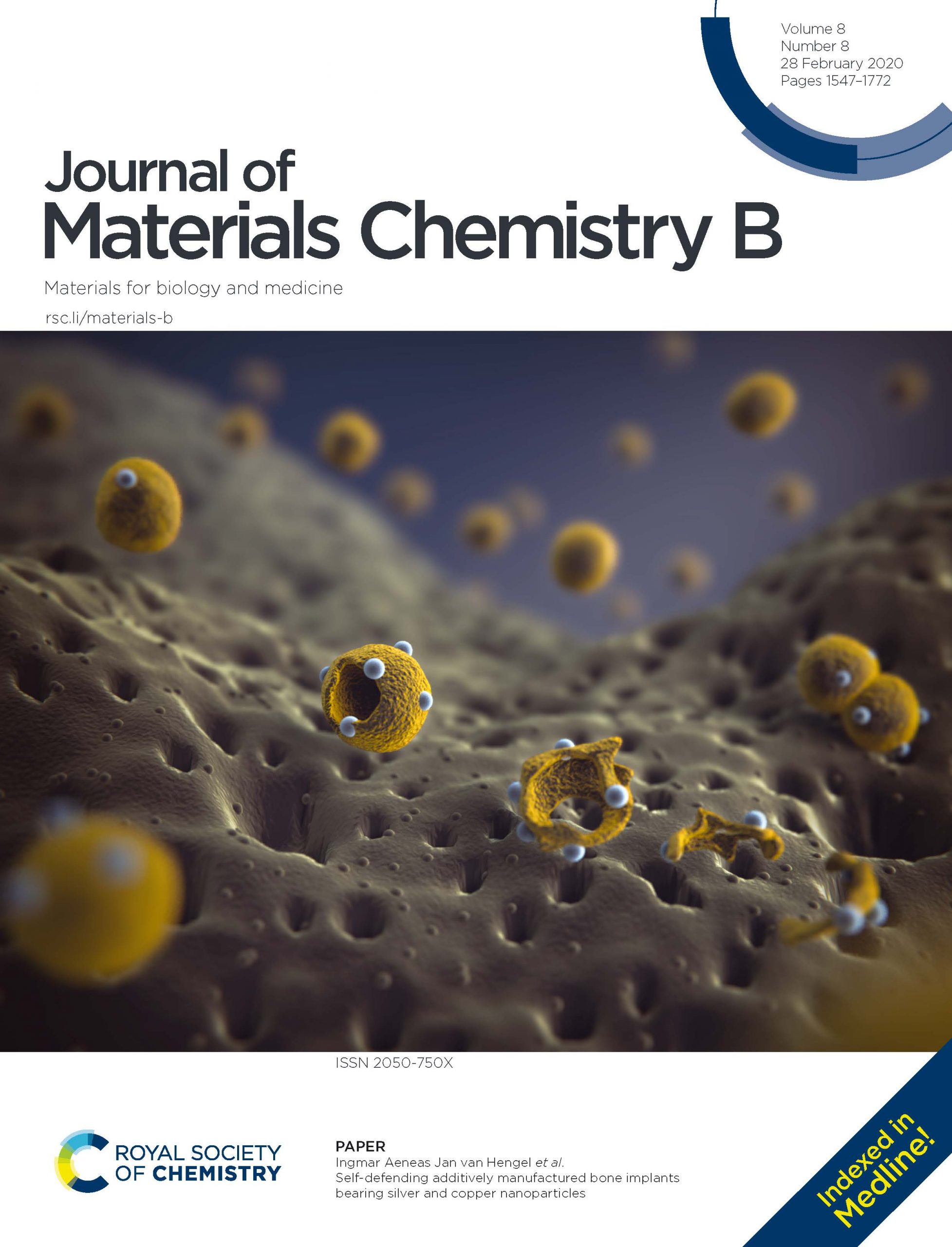The manufacturing of bone implants involves a great deal of problems which are still to be solved. One of the most important challenges are implant-associated infections which make the development of implants with intrinsic antibacterial properties a pressing issue. This is precisely what they are trying to achieve at the Department of Biomechanical Engineering (TU Delft).
They’ve just studied the effect of both Ag and copper nanoparticles on TiO2 surfaces and its effectiveness as antibacterial and osteoconductive biomaterials. In fact they’ve observed that these materials “have a strong antibacterial behavior against both planktonic and adherent bacteria in vitro conditions.”
 These results have been published in the Journal of Materials Chemistry B and have been featured on the cover. We designed the picture under the supervision of Ingmar A. J. van Hengel, first author of the paper.
These results have been published in the Journal of Materials Chemistry B and have been featured on the cover. We designed the picture under the supervision of Ingmar A. J. van Hengel, first author of the paper.
